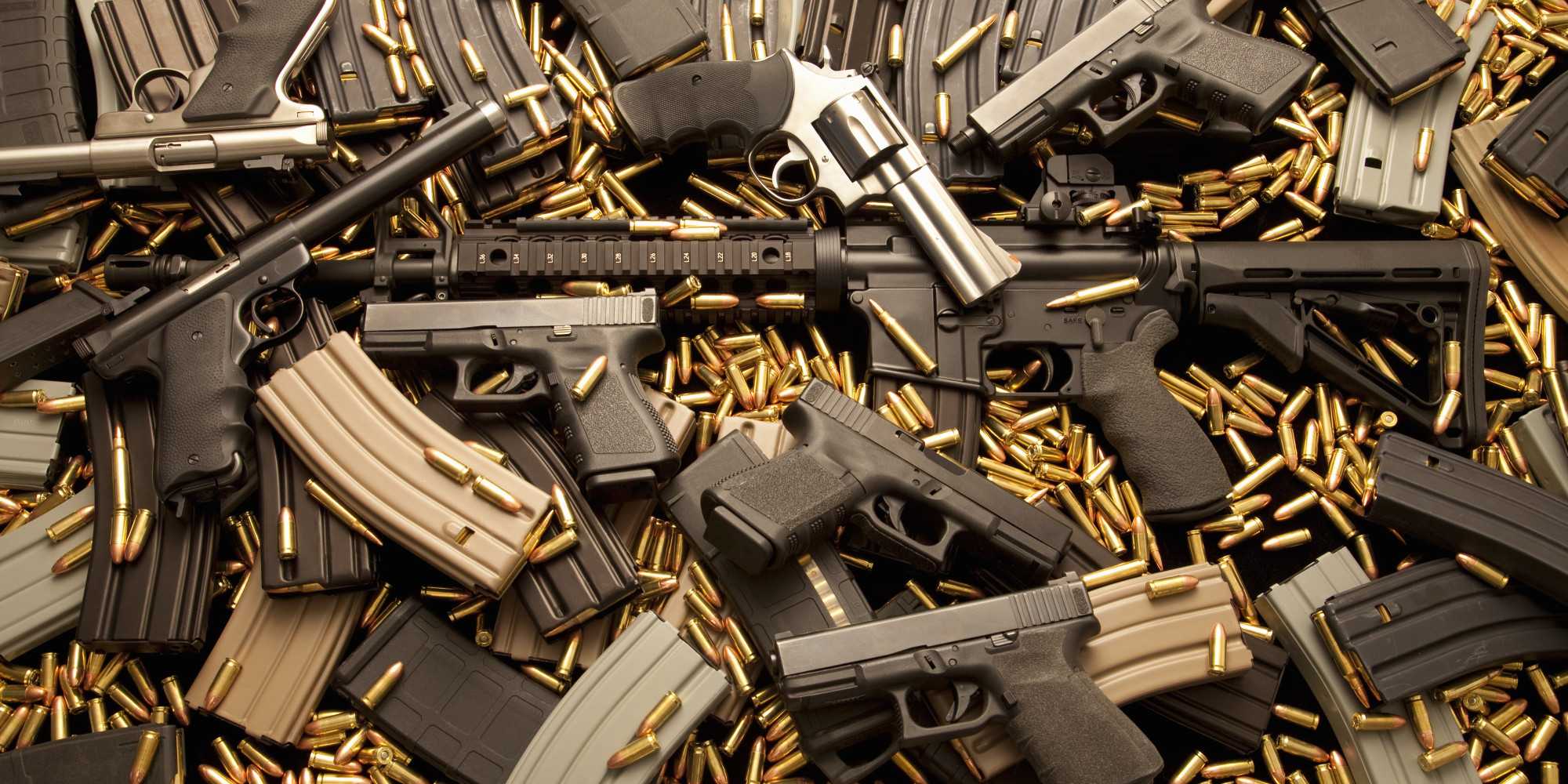Opposing viewpoints: Gun control in 2016 America
January 20, 2016
Obama’s executive order useful
As gun violence continues to rage throughout the nation, President Barack Obama’s administration decides to take a stand. Although at this point in his presidency his executive order stands as more theory than action, his message exists as an important conversation starter regarding the danger of guns, which we as a nation still gloss over. Thus, though likely ineffective, the meaning stands as the most important part of the order, and that message makes it important to the country.
Many dissidents of the executive order protest the proposed stricter gun regulations, requiring businesses selling guns to conduct background checks on customers, whether the customer purchases the gun in stores, online, or gun shows. Although the wording appears vague, the openness, ironically, allows for less businesses to take advantage. Had the administration specifically defined the types of organizations that must run background checks, other organizations that specifically avoided the requirements would undeniably pop up, so those who do not want to deal with background checks would shop at those establishments. The Obama administration intended for more safety when shopping for guns; a specific definition would allow for more loopholes.
As for those complaining about the increased security checks: a balance exists between safety and ease of purchase. If one truly wishes to buy a gun, and does not possess any previous crimes or mental health issues, then one should not worry about the hoops needed to jump through the obtain that gun. The order intends for the safety checks to prevent possible dangerous people from getting guns; to make American citizens as safe as possible. The order does not prevent the average person from obtaining a gun, it simply initiates more steps so that the county can exist as a safer nation.
The president, in his press release, mentions that firearms now kill almost as many Americans as car accidents; a report released by the Center for American Progress supports this claim. On average, 33,000 Americans die every year in gun-related violence, and the number likely stands as incomplete as the Center for Disease Control and Prevention leaves some gun-related deaths out of their statistics, due partly to privacy concerns. While safer roads and car regulations decreased automobile deaths in recent years, America’s gun policies remain more erratic.
Obama’s executive order attempts to set basic guidelines to steady these shaky gun policies: tightening restrictions of illegal firearm deals, adding more employees, increase mental health treatment as well as gun technology, and heightening focus on domestic violence issues. Yes, the order currently exists as a skeleton, but it is also a step in the right direction in decreasing gun violence. Had Obama made his executive order more specific (which would necessitate powers beyond that of the president), he would overstep his boundaries.
I, for one, am growing weary of turning on the news and hearing of another death because of a gun. I agree that banning guns outright would cause more problems than solutions, but I simply cannot fathom why one would not wish for more gun controls to increase citizen protection. Again, gun control does not prevent a vast majority of people from purchasing the guns they wish to buy, it simply makes it more difficult so that those who have the potential and drive to kill others needlessly cannot access the weapon for doing so.
Even if I did not agree with the executive order, Obama broke no laws in passing it. The order falls well within the bounds of the presidency, and he has not violated the Constitution any more than every president since Eisenhower has violated the Constitution by releasing executive orders. He does not bypass Congress; he steps in as president, standing by the right of a president to release such an order.
Ultimately, only Congress can fix the problem with gun violence and set clear-cut rules for guns. Yet instead of standing by and watching Congress squabble over laws to pass, Obama took steps completely within his legal authority granted to him by the Constitution to set precedents that make the system more rational, more effective, and more humane.
Obama’s executive order useless
On Tuesday, January 5 President Barack Obama spoke in front of his peers in the White House on the topic of gun control. In his half-hour long speech, Obama introduced four new executive actions pertaining to firearms in the United States. While they seem well-intentioned (Obama’s actions obviously do not stem from goals to win the office again, as he cannot run), Obama’s new executive orders fall with a deafening thud as their vague language and lack of specificity do not harness the power to do anything but promise a new future.
Obama’s executive actions strive to make current regulations on guns stricter. The first action requires anyone “in the business of selling guns” to run background checks on their customers. The second action provides more funding to the The Bureau of Alcohol, Tobacco, Firearms and Explosives (ATF) to hire more employees and “ensure smart and effective enforcement” of the new laws. Next, the administration plans to invest almost $500 million into mental health treatment. Lastly, Obama will use an executive action to boost the technology in gun safety.
Just listening to Obama’s explanations of the new executive actions raises a couple of questions.
The first executive action proposed requires background checks conducted by anyone “in the business of selling guns,” but does not supply a definition of what the phrase means. For example, if a father wants to sell his gun to his child, even though he does not work as a gun dealer, does that make him “in the business of selling guns?” The lack of specificity opens the door for a future snowballing into any transaction requiring a background check.
On the other hand, through his first executive action Obama finally accepts the problem with all of his proposed legislation and actions on gun control: the problem lies not in the lack of laws, but in the increase of people unwilling to follow the law. Before the executive actions, the law required background checks at gun stores, but not at gun shows or online. Even if the new action institutes background checks at shows and over the Internet, one problem will still exist: people selling guns and not following the laws. No matter how much legislation Congress or the President passes on gun control, guns will still be available to criminals who have no qualms about breaking the law.
Furthermore, in the press release from the White House on the executive actions, the press secretary writes, “ATF is finalizing a rule to require background checks for people trying to buy some of the most dangerous weapons and other items through a trust, corporation, or other legal entity.” Here lies another vague sentence with no definition of “most dangerous weapons.”
To try his best to explain the phrase, Obama claims to notice a decrease in semi-automatic firearm sales, which he grants to how they “kill almost as many Americans as car accidents.” Obama does not provide any statistics to support the trend, as well as no definition of a semi-automatic weapon. As someone with firearm experience, I cringed at the statement immediately. A semi-automatic firearm differs from an automatic firearm because it fires only one shot per trigger pull. For Obama to encourage gun owners to stop selling semi-automatic guns leaves them with either automatic guns, which the U.S. heavily regulates and most local gun stores cannot sell, or manually-cycled firearms. Unfortunately for Obama, who obviously does not understand how guns work, unless a buyer wants an older rifle or certain hunting guns, manually-cycled firearms do not function or protect as well as semi-automatic ones, and most gun owners will not waste their money on them.
The even more problematic part of Obama’s statement comparing “semi-automatic” weapons to car accidents lies in his reasoning. If gun stores stop selling firearms because they kill a lot of people every year, maybe the automotive industry should stop selling cars, an even more “dangerous weapon.”
As for the second executive action, everything sounds fantastic on paper: adding more employees, tightening restrictions on illegal firearms deals, and a renewed focus on domestic violence issues. Coupled with the third and fourth actions, to increase mental health treatment and gun technology, the executive actions let Obama take advantage of their lack of specificity with nothing but vague promises of stricter regulations in the future.
For example, to support his push towards “making our communities safer from gun violence,” Obama uses the example of Missouri, whose rate of gun deaths increased to “50% more than national average” when they denied increasing background checks. Without knowing the national average, the statistic given by Obama means nothing, but it persuades audiences because the idea of a large number like 50% scares people into agreement, lest they lose their state to gun violence. According to the Center for Disease Control, in 2013, the last year for available statistics, the mean firearms-related deaths per 100,000 population amounted to 10.6. According to Obama, Missouri’s firearms-related death rate rose to 15.9 deaths per 100,000 population. Compared to Missouri’s mean death rate per 100,000 population in 2013, which came to 807.7 deaths by the Henry J. Kaiser Family Foundation, their death-by-firearm rate totals to only approximately 2% of their total deaths.
The executive order gives the President the power to circumvent Congress, ultimately disrupting the balance of powers between the branches and allowing the leader of the country to make four new ordinances with no substance and a legacy which will only hurt his party in the future. If, in the future, a Republican takes the White House and runs into a roadblock in Congress over an issue he feels strongly about, why should he not follow the same path and create executive actions to push his agenda? I guarantee liberal Democrats will not be smiling then. By creating and passing his executive actions, Obama conjured four laws with no value and set a precedent for the future that will come back to haunt his political party, and the American people.


